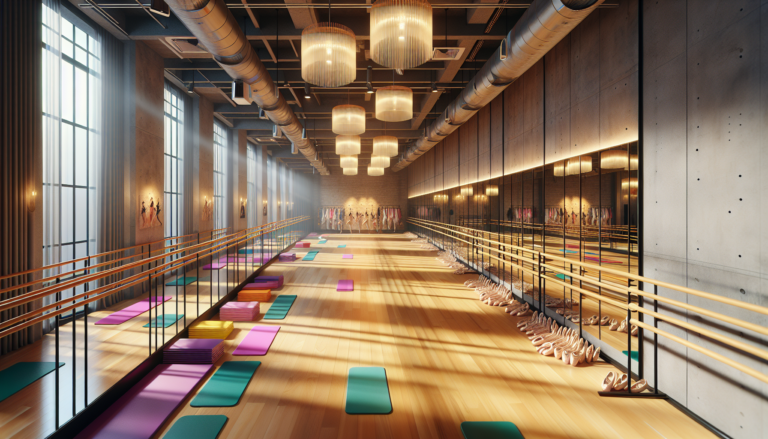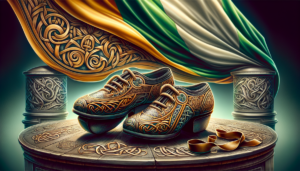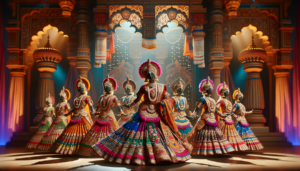Introduction to Dance Education
Dance education is a dynamic field that combines the artistic and educational mediums, defined as educating through dancing, dance making, and appreciation. It enriches life, society, and academia, recognized as a healthy, lifelong activity with benefits in physical, social, emotional, and intellectual growth. Dance education should start in early childhood and spans from elementary to professional levels.
The historical evolution of dance education has seen it transform from being part of physical education to becoming a separate discipline, with dance pedagogy encompassing content knowledge and teaching methods. Participation in dance correlates with higher academic performance and supports educational reform through the arts.
What is Dance Education?
Dance education is a field of study focused on the theory and practice of teaching dance, encompassing various degree programs and certifications for educators and artists. It integrates the artistic expression of dance with educational principles to foster creativity, movement, and personal growth in students of all ages.
A well-designed dance curriculum is at the heart of effective dance education. It outlines the structured educational program, content, and methods for teaching dance in various settings. The curriculum aims to develop technical skills, artistic expression, and an understanding of dance as an art form.
Historical Evolution of Dance Education
Dance education has undergone significant changes over time. Initially, dance was often included as part of physical education programs. However, as the understanding of dance as a distinct art form grew, so did the need for specialized dance education.
The establishment of dedicated dance education programs, such as the Dance Education program at NYU Steinhardt in 1932 by Martha Hill, marked a crucial turning point. These programs emphasized the development of dance pedagogy, which encompasses both content knowledge and teaching methods specific to dance.
Benefits of Dance Education
Dance education offers a wide range of benefits for students, contributing to their physical, emotional, social, and intellectual growth. Engaging in dance promotes a healthy lifestyle, enhances self-expression, fosters social connections, and supports academic performance.
Physical Benefits
Dance is a physically demanding activity that promotes overall fitness and well-being. Regular participation in dance classes helps improve:
- Cardiovascular endurance
- Muscular strength and flexibility
- Balance and coordination
- Posture and body alignment
Engaging in dance from an early age can lay the foundation for a lifetime of physical activity and dance fitness.
Emotional and Social Benefits
Dance education provides a supportive environment for emotional expression and social interaction. Through dance, students can:
- Develop self-confidence and self-awareness
- Express emotions and creativity
- Learn collaboration and teamwork skills
- Form friendships and social connections
Social dance forms, in particular, promote interaction and enjoyment among participants, fostering a sense of community.
Intellectual Benefits
Engaging in dance education has been linked to enhanced intellectual development and academic performance. Dancing involves:
- Memorization and recall of movement sequences
- Spatial awareness and pattern recognition
- Problem-solving and critical thinking skills
- Discipline and focus
Studies have shown that students who participate in dance tend to have higher academic achievement across various subjects.
Dance Education Programs and Degrees
NYU Steinhardt’s Dance Education Program, established in 1932 by Martha Hill, is one of the oldest and most prestigious dance education programs in North America. It offers multiple master’s degree tracks focused on professional development in dance education theory and practice, emphasizing inclusivity and passion for dance education.
NYU Steinhardt’s Dance Education Program
Founded by the legendary dance educator Martha Hill, NYU Steinhardt’s Dance Education Program has been at the forefront of the field since its establishment in 1932. The program is committed to preparing future dance educators who can inspire and guide students at various levels.
The community at NYU Steinhardt includes teachers, administrators, performing artists, and research scholars. Students benefit from opportunities for student teaching and practical experience, ensuring they are well-prepared for their careers.
Master of Arts Teaching Dance Grades K–12
The Master of Arts Teaching Dance Grades K–12 program at NYU Steinhardt prepares students for initial certification as dance teachers in elementary and secondary schools. The curriculum focuses on educational practices in dance, equipping graduates with the skills and knowledge to effectively teach dance to K-12 students.
Master of Arts Teacher of Dance All Grades
The Master of Arts Teacher of Dance All Grades program is designed for educators who already hold initial certification. It allows them to enhance their dance and pedagogical skills, preparing them to teach at all grade levels. The program emphasizes advanced dance techniques and teaching methodologies.
Master of Arts Teaching Dance in the Professions
For those interested in teaching dance in postsecondary and professional settings, such as studios and community colleges, NYU Steinhardt offers the Master of Arts Teaching Dance in the Professions program. It focuses on preparing individuals to teach dance in higher education and professional contexts.
Specializations: ABT Pedagogy and Dances of the African Diaspora
Within the Master of Arts Teaching Dance in the Professions program, students can choose from two specialized tracks:
- ABT Pedagogy: This specialization focuses on American Ballet Theatre pedagogy, preparing students for careers in dance education with a strong emphasis on ballet.
- Dances of the African Diaspora: This track prepares students to teach African dance in various educational settings, emphasizing cultural heritage and dance techniques.
Advanced Certificate Teaching Dance Grades K–12
For individuals who have already completed a master’s degree in dance education, NYU Steinhardt offers the Advanced Certificate Teaching Dance Grades K–12 program. This post-master’s study builds on previous dance education studies and prepares students for initial certification in New York State.
Components of Dance Education
Dance education encompasses various components that collectively contribute to a comprehensive learning experience. These components include the dance curriculum, creative movement, dance performance, recreational dance, folk dance, social dance, and dance fitness.
Dance Curriculum
A well-structured dance curriculum is the foundation of effective dance education. It outlines the educational program, content, and methods for teaching dance in different settings. The curriculum is designed to progressively develop students’ technical skills, artistic expression, and understanding of dance as an art form.
Creative Movement
Creative movement is an exploratory form of dance that encourages self-expression and creativity. It is often used in early childhood education to introduce young learners to the joys of movement and dance. Creative movement activities foster imagination, problem-solving skills, and body awareness.
Dance Performance
Dance performance is an integral part of dance education, allowing students to showcase their skills and artistry. Performances provide opportunities for dancers to apply what they have learned in the studio and share their passion with an audience. Participating in performances builds confidence, stage presence, and teamwork skills.
Recreational Dance
Recreational dance includes various forms of dance that are performed for enjoyment and social interaction rather than professional training. It encompasses a wide range of styles, from ballroom dancing to hip-hop. Recreational dance classes offer a fun and inclusive environment for individuals of all ages and skill levels to engage in physical activity and express themselves through movement.
Folk Dance
Folk dance refers to traditional dances that reflect the cultural heritage of a particular community or region. These dances are often passed down through generations and are an important part of cultural preservation. Including folk dance in dance education helps students appreciate and understand diverse cultural traditions.
Social Dance
Social dance encompasses dance forms that are performed in social settings, such as weddings, parties, or dance clubs. These dances promote interaction, communication, and enjoyment among participants. Teaching social dance in educational settings helps students develop social skills, etiquette, and confidence in social situations.
Dance Fitness
Dance fitness combines elements of dance with physical exercise to promote health and wellness. It includes styles like Zumba, barre, and cardio dance. Incorporating dance fitness into dance education programs encourages students to maintain an active lifestyle and view dance as a lifelong activity for physical and mental well-being.
The Role of Arts Organizations in Dance Education
Arts organizations play a crucial role in supporting and promoting dance education. They provide resources, opportunities, and collaborations that enhance the learning experience for students and educators alike.
Support and Resources
Arts organizations offer various forms of support and resources to dance education programs. These may include:
- Funding and grants for dance education initiatives
- Professional development opportunities for dance educators
- Access to performance venues and rehearsal spaces
- Educational materials and curricula
By providing these resources, arts organizations contribute to the growth and sustainability of dance education programs.
Collaborations and Opportunities
Collaborations between arts organizations and dance education programs create valuable opportunities for students and educators. These collaborations may involve:
- Guest artist residencies and workshops
- Masterclasses with renowned dance professionals
- Performance opportunities in professional settings
- Networking and mentorship programs
Through these collaborations, students gain exposure to the professional dance world and benefit from the expertise of experienced artists and educators.
Conclusion
Dance education is a vital field that nurtures creativity, self-expression, and physical well-being. It offers a wide range of benefits, from promoting fitness and emotional growth to enhancing academic performance and social skills.
The Future of Dance Education
As dance education continues to evolve, there is a growing recognition of its importance in the overall development of individuals. The future of dance education lies in:
- Increased accessibility and inclusivity
- Integration of technology and innovative teaching methods
- Emphasis on cultural diversity and global perspectives
- Collaboration with other art forms and disciplines
By embracing these trends, dance education can continue to thrive and make a positive impact on students’ lives.
Encouraging Creativity and Movement
At its core, dance education is about encouraging creativity and movement. It provides a safe space for students to explore their artistic potential, express themselves, and develop a lifelong love for dance.
By offering diverse dance education programs, such as those at NYU Steinhardt, and fostering collaborations with arts organizations, we can ensure that the joy and benefits of dance reach a wide range of individuals. Through dance education, we can unlock the power of creativity and movement, enriching lives and communities.






